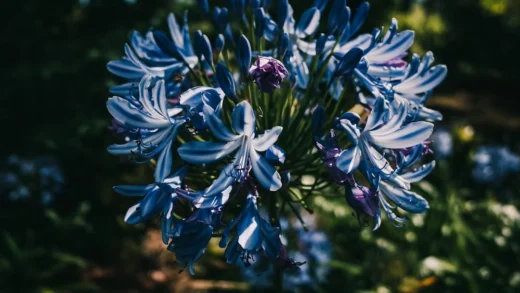While marigolds are celebrated for their ability to thrive even in less-than-ideal conditions, understanding their specific nutrient requirements and providing appropriate fertilization can elevate their performance from merely good to truly spectacular. These cheerful annuals are not heavy feeders, and in fact, can suffer from an overabundance of certain nutrients. The key to successful fertilization is to provide a balanced diet that supports vigorous growth, strong root development, and, most importantly, a profusion of vibrant, long-lasting blooms. Achieving this balance involves preparing the soil properly before planting and applying supplemental fertilizers judiciously throughout the growing season, if and when they are needed.
The three primary macronutrients that all plants require are nitrogen (N), phosphorus (P), and potassium (K). For marigolds, the balance of these nutrients is crucial. Nitrogen is essential for promoting lush, green foliage. However, an excess of nitrogen will cause the plant to put all its energy into producing leaves at the expense of flowers, resulting in a large, bushy green plant with few or no blooms. Phosphorus plays a vital role in root development, energy transfer, and flower production, making it a key nutrient for a brilliant floral display. Potassium contributes to the overall health and vigour of the plant, improving its resistance to disease and stress.
The foundation of good nutrition for marigolds begins with the soil. A soil that is rich in organic matter will often provide all the nutrients that marigolds need for the entire season. Incorporating well-rotted compost, leaf mould, or aged manure into the garden bed before planting is the single best thing you can do to ensure your plants are well-fed. Organic matter not only supplies a slow, steady release of balanced nutrients but also improves soil structure, drainage, and water-holding capacity, creating the perfect growing environment.
For plants grown in containers or in nutrient-poor soil, supplemental fertilization may be necessary to maintain peak performance. When choosing a fertilizer, it is important to select one that is appropriate for flowering annuals, typically one with a lower nitrogen number and higher phosphorus and potassium numbers. Applying the right fertilizer at the right time and in the right amount will encourage your marigolds to produce a continuous succession of brilliant flowers from spring until the first frost, without promoting excessive leafy growth.
Understanding nutrient basics for marigolds
To properly fertilize marigolds, it is essential to have a basic understanding of the key nutrients they need. The N-P-K ratio, which is prominently displayed on fertilizer packaging, represents the percentage of nitrogen, phosphorus, and potassium in the product. For marigolds, an ideal fertilizer will not be overly rich in nitrogen. A balanced fertilizer, such as a 10-10-10 formula, can be used sparingly, but a formula specifically designed for blooms, often with a ratio like 5-10-5 or 10-20-10, is generally a better choice. The higher middle number (phosphorus) directly supports the development of flowers.
Beyond the primary macronutrients, marigolds also benefit from a range of secondary nutrients and micronutrients, though they are needed in much smaller quantities. These include calcium, magnesium, sulfur, iron, manganese, and zinc. In most cases, a healthy garden soil that is rich in organic matter will contain sufficient amounts of these trace elements. Compost is an excellent source of a wide spectrum of micronutrients and helps to create a thriving soil ecosystem where these nutrients are readily available to the plant’s roots.
The form of fertilizer you choose can also impact nutrient delivery. Granular, slow-release fertilizers are mixed into the soil at planting time and break down gradually over several weeks or months, providing a steady supply of nutrients. This is often a convenient, set-and-forget option for garden beds. Water-soluble or liquid fertilizers, on the other hand, are mixed with water and applied during regular watering. They provide a quick boost of nutrients that are immediately available to the plant, making them an excellent choice for container-grown marigolds or for giving a quick feed to garden plants that appear to be struggling.
It is important to recognize the signs of nutrient deficiencies, although they are not common in marigolds grown in decent soil. Yellowing leaves (a condition known as chlorosis), particularly on the older, lower leaves, can indicate a nitrogen deficiency. A purplish tinge to the leaves might suggest a lack of phosphorus. Stunted growth and weak stems can be a sign of a general lack of nutrients. However, it is crucial to rule out other potential causes, such as improper watering or disease, before applying fertilizer, as adding more nutrients to an already stressed plant can sometimes do more harm than good.
Preparing the soil before planting
The most effective way to meet the nutrient needs of your marigolds is to prepare the soil thoroughly before you even plant a single seed or seedling. By enriching the soil with organic matter, you create a nutrient-rich foundation that can sustain the plants throughout the entire growing season, often eliminating the need for any supplemental chemical fertilizers. This approach not only feeds the plants but also improves the overall health and structure of your garden soil for years to come.
Start by loosening the soil in your chosen planting area to a depth of at least 20 to 30 centimetres. This helps with drainage and allows the plant’s roots to grow easily. Once the soil is loosened, spread a generous layer of organic matter over the surface. A 5 to 10 centimetre layer of well-rotted compost is ideal. Compost is often referred to as “black gold” by gardeners because it provides a perfectly balanced mix of essential macro and micronutrients in a slow-release form that will not burn the plants.
Other excellent organic amendments include aged animal manure (from herbivores like cows, horses, or chickens), leaf mould, or coir. These materials not only supply nutrients but also improve soil aeration, increase its ability to hold water, and encourage a healthy population of beneficial soil microorganisms. After spreading the organic matter, use a garden fork or tiller to incorporate it thoroughly into the top layer of soil, creating a rich, crumbly, and fertile planting medium.
If you are unsure about the quality of your soil, conducting a soil test can provide valuable information about its pH level and existing nutrient content. A soil test can tell you if your soil is deficient in any specific nutrient and provide recommendations for how to amend it. For marigolds, a soil pH between 6.0 and 7.0 is optimal for nutrient uptake. If your soil is too acidic or alkaline, the test results will guide you on how to adjust it, ensuring that the nutrients you provide are actually available for the plants to absorb.
Fertilizing during the growing season
If you have prepared your soil with plenty of compost, your marigolds may not need any additional fertilizer during the growing season. In fact, for marigolds planted in rich garden soil, adding more fertilizer is often unnecessary and can be detrimental. The primary sign that your marigolds might need a supplemental feeding is if their growth seems stunted, the leaves are pale or yellowing, and they are producing very few flowers, despite receiving adequate sunlight and water.
If you determine that your garden-grown marigolds do need a boost, choose a balanced, all-purpose liquid or granular fertilizer. It is best to apply it at half the strength recommended on the package instructions. A single application in mid-summer, when the plants are actively growing and setting buds, is usually sufficient. Over-fertilizing can lead to a build-up of salts in the soil, which can damage the plant’s roots, and as previously mentioned, too much nitrogen will result in fewer flowers.
When applying granular fertilizer, sprinkle it lightly on the soil around the base of the plants, being careful to avoid direct contact with the stems and leaves. Gently work it into the top centimetre of soil with your fingers or a small hand cultivator, and then water the area thoroughly. This watering helps to dissolve the granules and carry the nutrients down to the root zone where they can be absorbed. Always follow the application rates on the product label, as more is definitely not better when it comes to fertilizing marigolds.
For liquid fertilizers, mix the concentrate with water according to the package directions, again considering using a half-strength solution. Apply the liquid fertilizer to the soil around the base of the plants as you would during a normal watering. This method provides a quick dose of nutrients and is an excellent way to give a fast boost to plants that are showing signs of a deficiency. A light feeding once every four to six weeks is more than enough for marigolds in the ground.
Special considerations for container marigolds
Marigolds grown in pots and containers have different fertilization needs than those planted in the garden. The potting mix in containers has a limited volume and, as you water the plants, nutrients are gradually leached out and washed away through the drainage holes. This means that container-grown marigolds will require more regular feeding to sustain their growth and continue blooming prolifically throughout the season.
When you first plant your marigolds in a container, use a high-quality potting mix that contains a slow-release fertilizer. This will provide a good initial supply of nutrients to help the plants get established. However, this initial charge of fertilizer will eventually be used up by the plant or leached out by watering, so you will need to begin a supplemental feeding program a few weeks after planting.
The best way to fertilize container marigolds is with a water-soluble or liquid fertilizer formulated for flowering plants. A product with a higher phosphorus content (the middle number in the N-P-K ratio) will encourage continuous blooming. Plan to feed your potted marigolds every two to four weeks throughout the growing season. Mix the fertilizer with water according to the label’s instructions, and use this solution to water your plants thoroughly.
It is important to only apply fertilizer when the potting mix is already moist. Applying liquid fertilizer to dry soil can scorch the plant’s roots. If the pot is very dry, water it first with plain water, let it drain for about half an hour, and then apply the fertilizer solution. By providing this consistent supply of nutrients, you will be replenishing what is lost through watering and giving your container marigolds the energy they need to produce a stunning and continuous display of colour all season long.


















